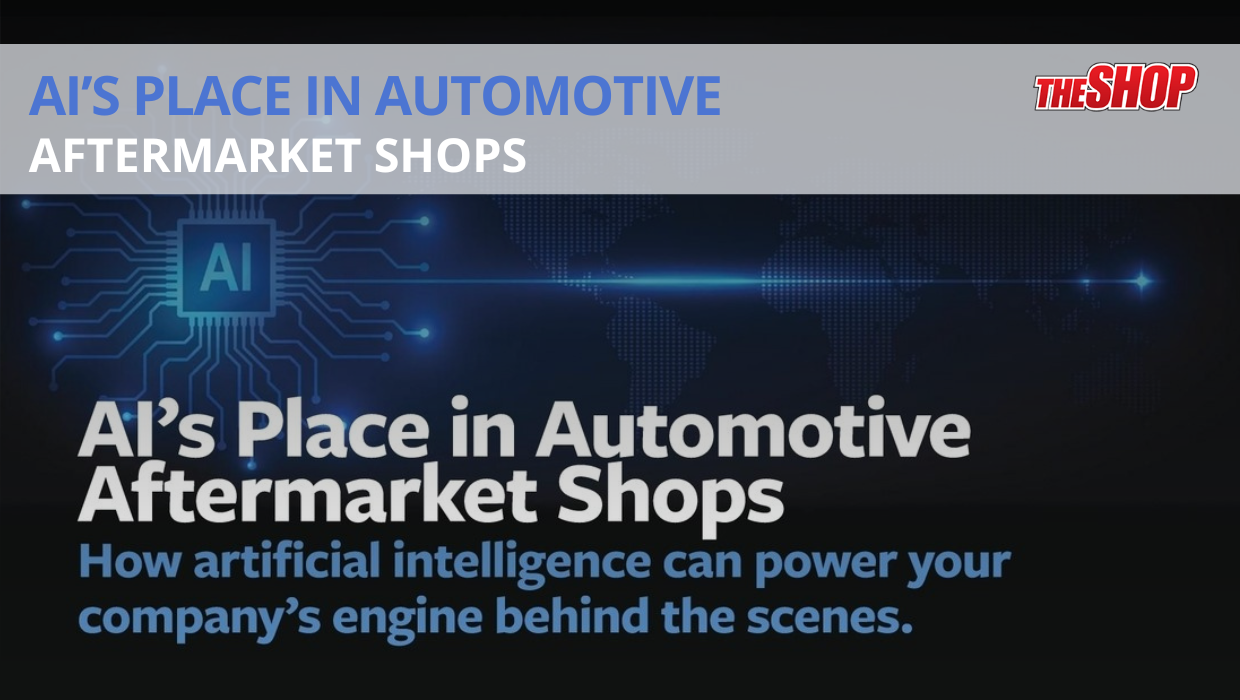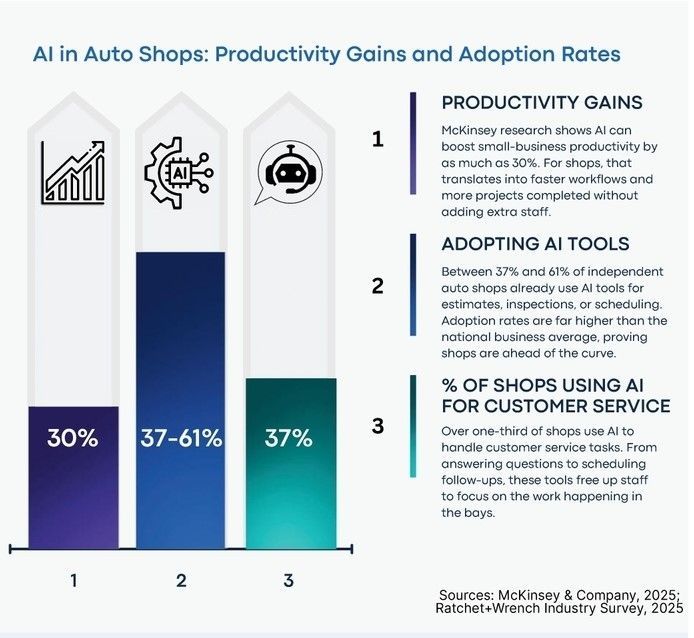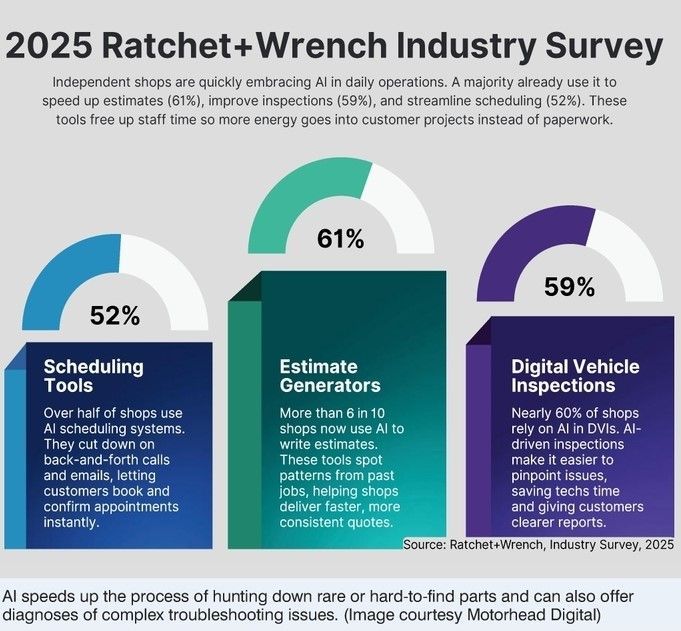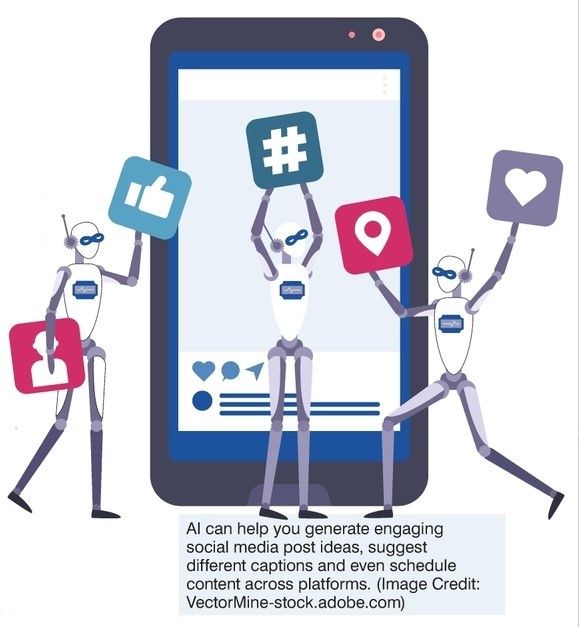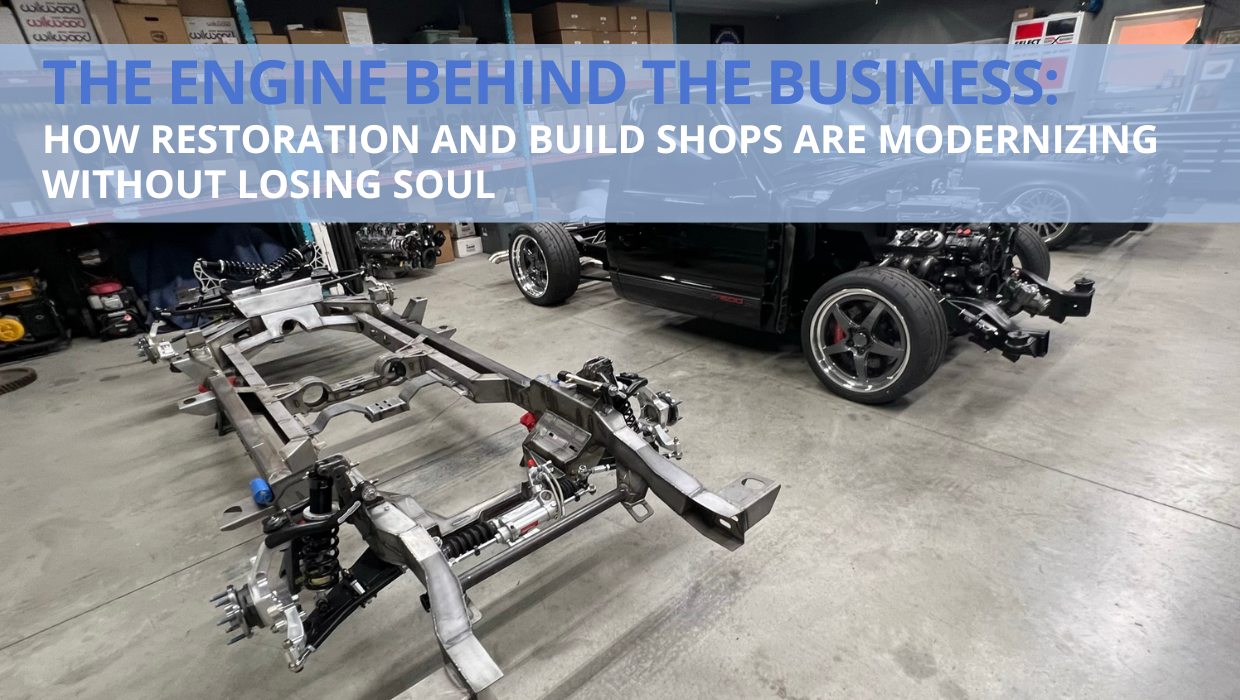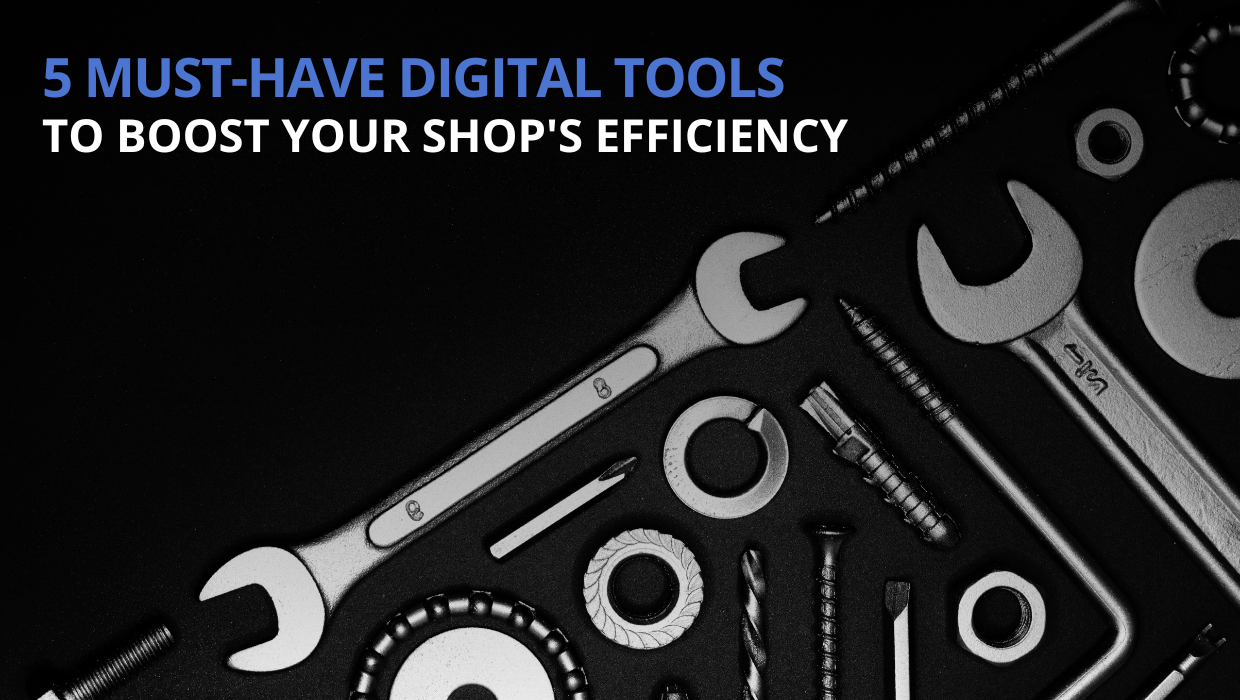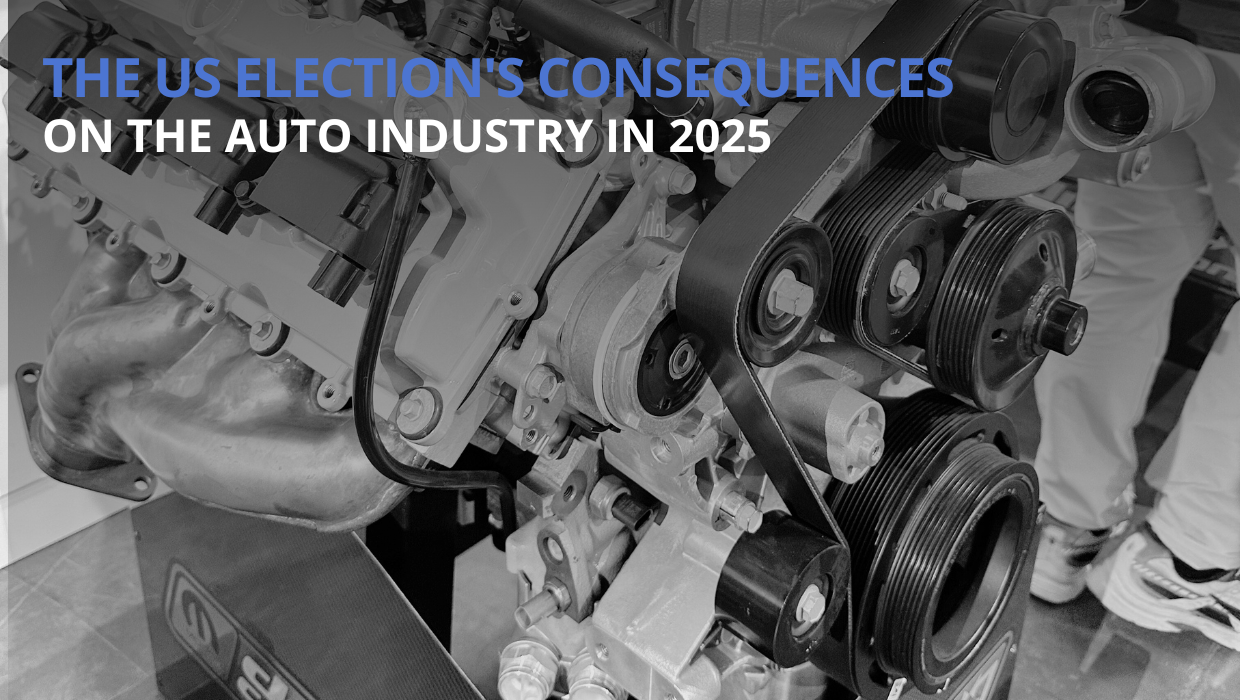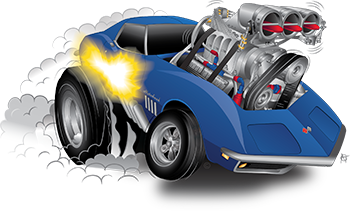Practical AI uses in the automotive aftermarket industry
Suppose you’ve never used shop scheduling software or a diagnostic tool in your shop. Congratulations! In that case, you’re probably already working with AI, as many tool companies have already incorporated AI functionality into their diagnostic software, even if it’s not apparent.
The thing many people don’t realize is that AI is already all around us. The real power comes from putting it to work on the right tasks to make life in your shop as easy as possible.
With that in mind, here are some practical ways AI can make a real difference for your shop:
AI for content marketing
Keeping your shop visible online is a full-time job in itself. Thankfully, AI can help you generate engaging social media post ideas, suggest different captions, and even schedule content across platforms so you’re consistently connecting with your followers.
But it doesn’t stop there. AI can also assist with blogs, giving you a starting point for guides, how-tos, industry updates, or shop stories that share your expertise with the world.
For online ad campaigns, AI can help target the right audience and test variations to see what works best. This means your ads will reach more of the right people over time without you spending hours manually tweaking campaigns.
PRO TIP: You don’t always have to create brand new content. AI can be used to repurpose existing content, saving a lot of time. For example, one blog post could be turned into multiple social media posts.
Smarter troubleshooting
Searching through info on the web or repair manuals while trying to troubleshoot what’s wrong with a vehicle with modern electronics is time-consuming and energy-draining. Modern AI-driven diagnostic tools can spot patterns in a car’s behavior from a mile away and sometimes pinpoint the exact fix. This can help less-experienced techs handle complex problems. That way, less time is spent scratching your head and a lot more time turning wrenches, getting projects completed and cars back on the road. Bosch and Snap-on are already incorporating AI into their platforms to provide more comprehensive and efficient diagnostic services.
For those pre-computer classics, you can use AI’s Deep Search feature to save hours searching the web for the one issue that’s causing you to pull your hair out. With Deep Search, you can ask AI to act as a Master Mechanic or, better yet, an ASE Certified Master Technician, explaining the issue that you’re having, and let it find a possible solution for your problem. Ask the question(s) and come back in 10-20 minutes, and you’ll be amazed at what AI will dig up.
PRO TIP: The more accurate information in the prompts that you give AI, the better the results will be. You can also ask follow-up questions to dig deeper into your research.
Effortless inventory management
AI-powered inventory systems, integrated with accounting and business management software or point-of-sale (POS) systems, can track parts usage, sales, and inventory levels in real-time. They learn what you use most often and predict what you'll need for upcoming jobs.
For smaller shops with limited storage space or capital, having the right amount of inventory on hand is critical. Carrying too much inventory ties up cash, while low stock levels lead to project delays. AI helps find the perfect balance by analyzing sales data, supplier lead times, and project schedules.
AI-driven inventory systems can even automatically place orders for you without you lifting a finger. You’ll never waste time with manual stock counts or delay a job because of a missing part again.
The U.S. Census Bureau’s 2025 data shows nearly 1 in 10 businesses are already using AI in daily operations, and adoption in the automotive industry is running well above that, especially in parts and inventory management.
PRO TIP: Set your AI inventory system to send an alert when stock for popular items drops to a certain level. This way, you can avoid running out of any critical parts once and for all.
Streamlined scheduling
The back-and-forth of scheduling with prospects or clients can consume a significant amount of your valuable time with texts, emails, and phone calls. AI tools let your prospects and customers book appointments online and confirm with a quick text.
This frees you up from time-costly phone calls and endless email chains. The result? More time focusing on managing and working on customer projects instead of working on the phone.
PRO TIP: To reduce no-shows and save time on follow-ups, set up automated email and text reminders to go out the day before their appointment.
Faster part search
Hunting down a rare part can mean hours – even days – of digging through forums and online marketplaces for what you need. AI-powered deep search scans all those sources at once with just a few clicks.
It can pull results from eBay, Hemmings, and most any other online sources, such as open car-related forums and resource sites to provide you with the information you need. In some cases almost instantly.
PRO TIP: Utilize AI's handy cross-referencing features to find suitable alternatives when the exact parts you need are unavailable.
Fun Fact
The average restoration project is made up of
thousands of individual tasks. Consider this: from the initial teardown to the final detailing, there’s a lot to accomplish. Even if AI tools only save you 10% of that time, it still adds up to days of work and effort saved.
Expert Insight
McKinsey reports productivity gains up to 30% for small businesses using AI. Add that to industry data showing 37–61% adoption of AI-powered shop tools, and it’s clear that these gains are already being realized in real shops.
Using AI to build smarter website content

